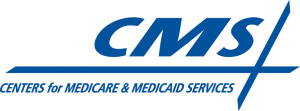Products

Who We Serve
November 12, 2015
Fascinating FAQs...FFAQs. This post is part of an ongoing series offering byte-sized nuggets of HIT-related info that you never realized you should know.
Today’s FFAQ: What is MIPS and why should you care?
No… I’m not talking about the antiquated measure of a computer’s speed and power, million instructions per second. Nor, if you’re a bicyclist, the Multi-directional Impact Protection System used in helmets to protect your brain when you take a fall.
Instead, turn your attention to last Spring’s legislative “doc fix” which repealed the sustainable growth rate formula (SGR), thereby ending the old system of annual cuts in Medicare’s physician fees. The old SGR was intended to counter spending growth that has been driven by healthcare’s fee-for-service model which rewards volume and intensity. On April 16, 2015 the President signed the bi-partisan “doc fix” bill into a law, officially titled the Medicare Access and CHIP Reauthorization Act of 2015, which essentially overhauls the Medicare payment system.
Enter MIPS. To achieve its long-discussed move from from volume-based to value-based payments, The Centers for Medicare and Medicaid (CMS) is establishing a Merit-based Incentive Payment System (MIPS). The MIPS will be a value-based payment program that assesses the performance of each eligible provider in four categories: Meaningful Use / MIPS of certified EHRs, PQRS, Value-Based Modifier (VBM), and Clinical Practice Improvement.
 2017 is expected to be the the first performance measurement year; the MIPS score for 2017 would then adjust reimbursements in the 2019 payment year. This is not unlike other Medicare programs such as MU and VBM, in which there has been a two-year lag from performance year to payment year. In turn, the new law sunsets separate MU payment adjustments starting with the 2019 payment year (the 2017 MU performance year).
2017 is expected to be the the first performance measurement year; the MIPS score for 2017 would then adjust reimbursements in the 2019 payment year. This is not unlike other Medicare programs such as MU and VBM, in which there has been a two-year lag from performance year to payment year. In turn, the new law sunsets separate MU payment adjustments starting with the 2019 payment year (the 2017 MU performance year).
Providers who achieve exceptional performance, and who participate in the MIPS will be eligible for additional payments, with $500 million in funding for these payments to be made available every year from 2019 through 2024. Note that if providers participating in the MIPS do not meet certain performance objectives, they will be subject to negative payment adjustments.
Providers who participate in alternative payment models also will be eligible for extra payments, such as shared savings for accountable care organizations and care management fees or shared savings for patient-centered medical homes,
What about Medicare payments between now and 2019? The old SGR volume-based cuts to fees will be replaced with small annual updates: fees will increase 0.5 percent each year from 2016 through 2019, and then remain unchanged through 2025.
As usual, this new legislation requires a period of rule-making to fine tune a myriad of complex details. Predictions from CMS are that we will be seeing a proposed 2017 MIPS rule by mid-2016, and a final rule by the end of 2016.
If you’re now ready to pick up a copy of the Medicare Access and CHIP Reauthorization Act of 2015 for some extraordinarily difficult weekend reading, it’s available on the govtrac.us website. But a less painful course is to go to CMS’ MIPS page. Then keep watching it, and/or check in again with us at HITpoint for updates.